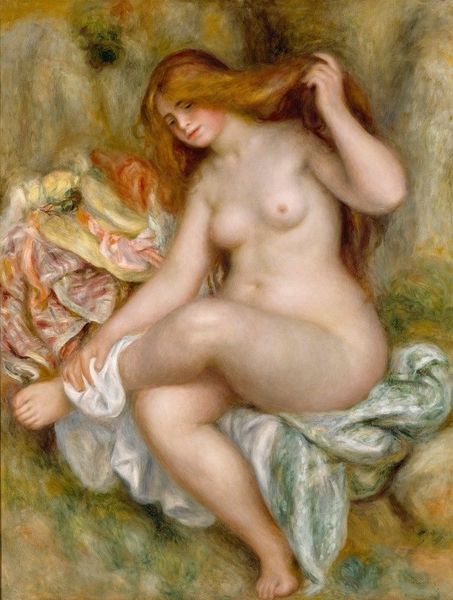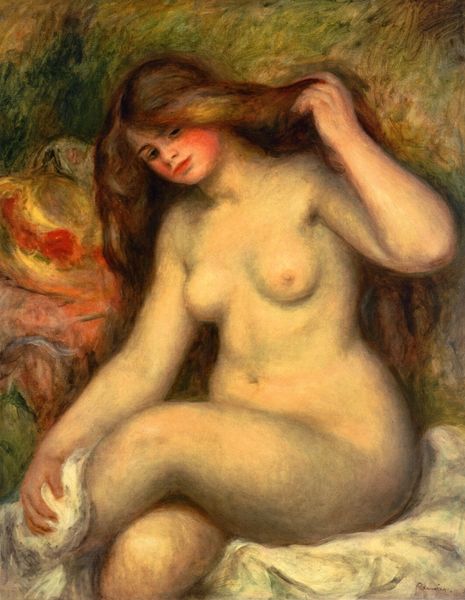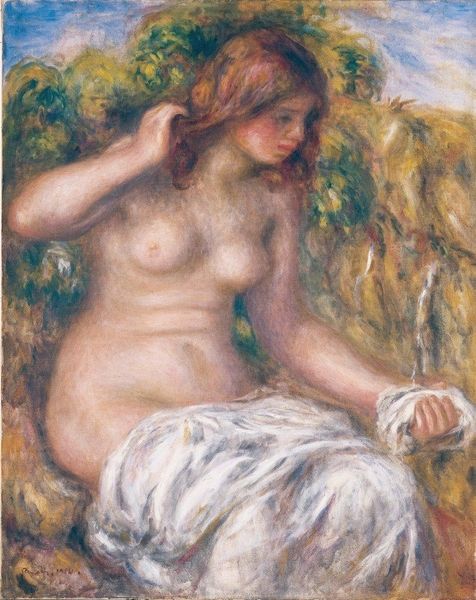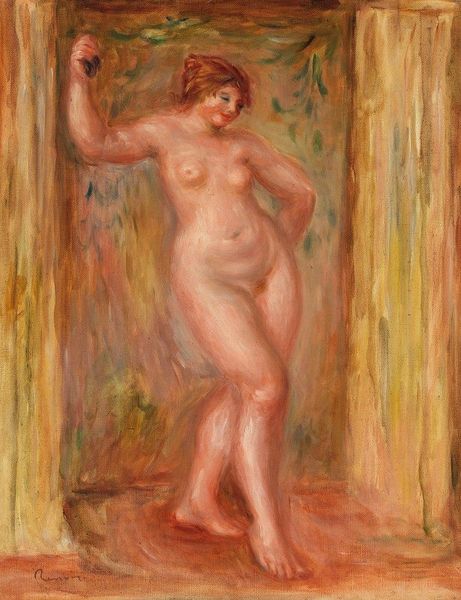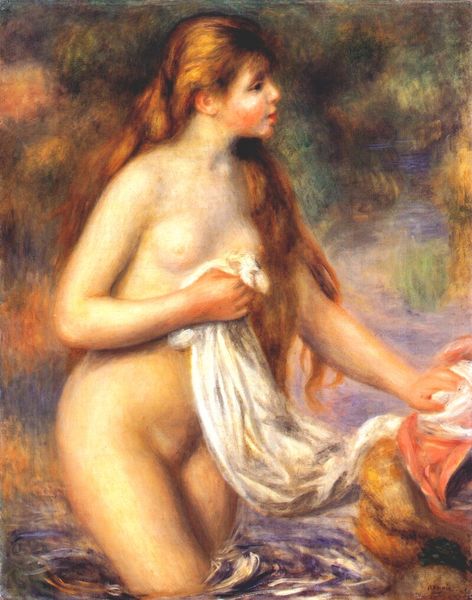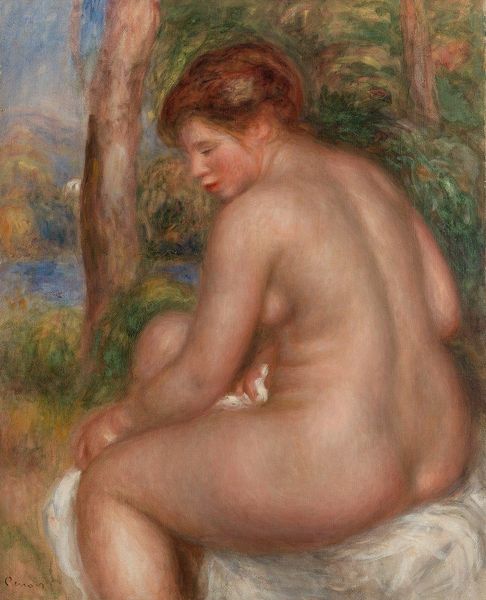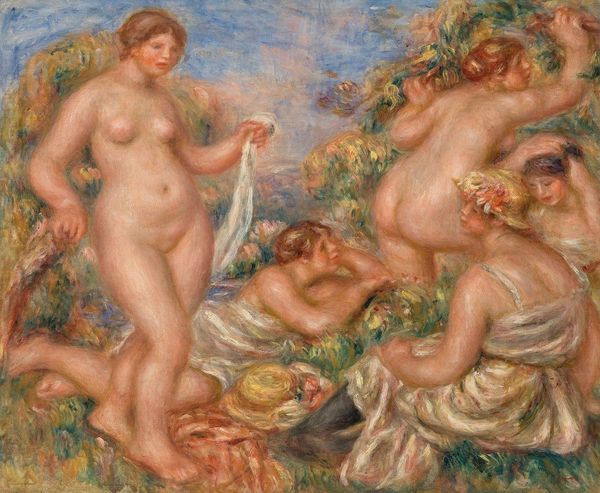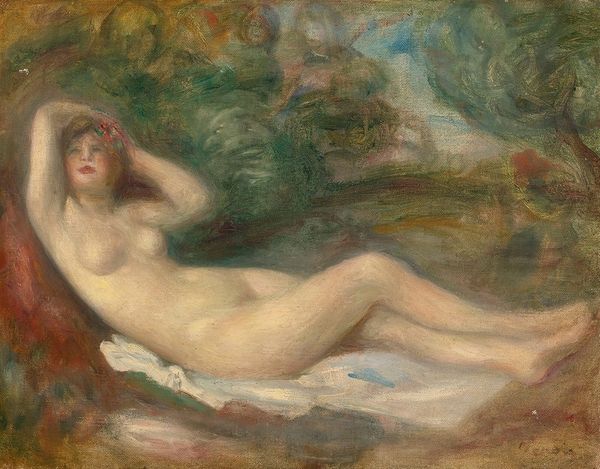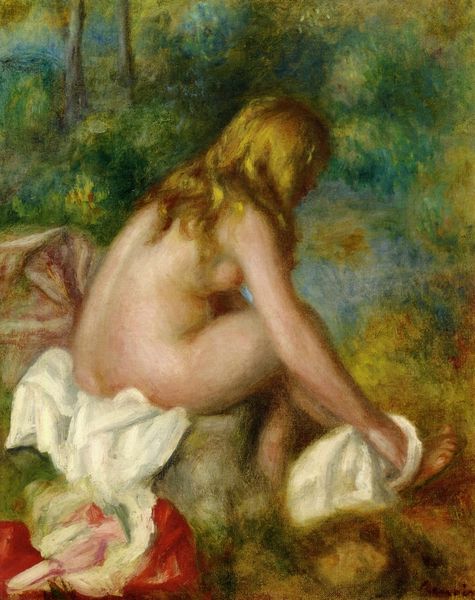
Copyright: Public Domain: Artvee
Editor: We are looking at "After the Bath," an oil painting created around 1910 by Pierre-Auguste Renoir. The brushstrokes are soft, creating a hazy effect, and the palette feels very warm. What do you see in this piece, considering its cultural moment? Curator: This piece really exemplifies the male gaze so present during this era, don’t you think? It displays a sensuous intimacy, a commonplace fascination for the Impressionists, but that gaze reduces the female form to its aesthetics while isolating her. In many ways, Renoir romanticizes his models' circumstances through the female nude, don't you agree? How does the viewer then engage with art history, theory, and perhaps, sociology? Editor: I suppose I had not considered the artist's role in that historical depiction, so I focused more on the style and technique rather than the context. So, how might we analyze this painting from a feminist perspective, keeping the era in mind? Curator: Think about how women, particularly women of color and working-class women, have historically been excluded from the narrative. Here, even without any additional signifiers of class or labor, we have an idealized figure. Do we have a representation that reinforces dominant power structures, even as it appears sensual and intimate? How would we represent "After the Bath" today? Editor: Seeing it in this light makes me think about representation and agency differently. Curator: Absolutely. By considering the painting's socio-historical context, we see art as more than just aesthetics; it's a reflection of societal power dynamics. Editor: It really gives me new tools to view art in a broader context. Curator: That's exactly the point. Art and its interpretation always depend on who holds the paintbrush, the mirror, and the pen.
Comments
No comments
Be the first to comment and join the conversation on the ultimate creative platform.
